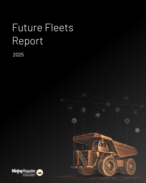Over the past year, the US Environmental Protection Agency has finalized and proposed three rules that many fear signal the end of coal-fired power generation: the Cross-State Air Pollution Rule, the Mercury and Air Toxics Standards Rule and the Carbon Pollution Standard for New Power Plants.
On July 6, 2011, the EPA finalized the CSAPR, which stems from the 1990 Clean Air Act amendments and replaces the Clean Air Interstate Rule. CAIR was initially vacated in 2008 by the District of Columbia Circuit Court of Appeals but the court subsequently changed the vacatur to a remand, leaving the rule in place until EPA responded to the remand.
The court then instructed EPA to make revisions to CAIR, which resulted in the CSAPR. The CSAPR requires the reduction of power plant emissions of sulfur and nitrogen oxide in 27 “upwind states” in order to limit harm to air quality in “downwind states”.
EPA estimates this rule will force the closure of power plants with a generating capacity of 4.7 gigawatts. However, the Edison Electric Institute estimates plant closures related to this rule will be in the order of 50GW of capacity, the equivalent of 50 big coal power plants.
The rule has been challenged in the DC Circuit Court of Appeals by more than 40 plaintiffs – including several companies, industry groups, and upwind state governments – who alleged they would suffer irreparable harm if the rule took effect on January 1, 2012. The court issued an order staying the CSAPR and preventing it from taking effect as scheduled, pending the resolution of the appeal of the rule.
A final ruling on this appeal is expected during the summer of 2012.
Like the CSAPR, the MATS Rule stems from the 1990 CAA Amendments and has been proposed at the instruction of a ruling by the DC Circuit Court of Appeals. On December 16, 2011, EPA announced the final MATS Rule and published it February 16, 2012, making the rule effective April 16, 2012.
The MATS rule limits emissions of mercury, arsenic and other purported toxic substances from new and existing power plants. As background, on March 15, 2005, EPA had issued a Clean Air Mercury Rule to permanently cap and reduce mercury emissions from coal-fired power plants for the first time ever.
However, on February 8, 2008, the DC Circuit vacated EPA’s rule removing power plants from the Clean Air Act list of sources of hazardous air pollutants and, at the same time, vacated the CAMR. The MATS is the first federal rule setting a standard for the release of mercury into the air from power plants. Under the rule, power plants can emit 1.2 pounds of mercury per million BTUs of energy produced. The rule gives existing utilities three years to comply, with the administration encouraging the states to make “broadly available” an additional fourth year as needed for technology installation.
Case-by-case extensions can also be granted to address local electricity reliability issues.
To comply, existing power plants will have to choose between installing costly pollution controls, equipment switching to natural gas, or ceasing operations. In addition, many experts argue that no new coal fired units can be built and meet all of the rule’s requirements, effectively prohibiting the construction of any coal-fired generation.
Even under EPA’s often conservative fiscal estimate, the rule is expected to cost $9.6 billion annually – making it one of the most expensive rules the agency has ever issued. According to a study by the American Coalition for Clean Coal Electricity, as much as 12% of coal-fired generation would be forced to retire due to this regulation.
Finally, on March 27, 2012, EPA proposed the Carbon Pollution Standard for New Power Plants. This draft rule is rooted in the 2007 directive from the Supreme Court instructing EPA to decide whether carbon dioxide is a pollutant that must be regulated under the CAA.
In late 2009, EPA declared carbon dioxide was a pollutant that must be regulated. This draft rule would limit carbon dioxide emissions from new power plants to 1000 pounds per megawatt-hour.
Recently built power plants fired by natural gas already meet the proposed standards, so the rule presents little obstacle for new gas plants. The real challenge is for coal-fired plants as there is no easily accessible technology to bring their emissions under the limit.
Critics argue the EPA was supposed to set standards based on existing technology.
According to the critics the standard as proposed would require something that does not exist as a commercial technology, namely carbon capture and sequestration. According to some in the mining industry, this rule will also make it impossible to build any new coal-fired power plants.
Many in the mining industry view this rule as an attempt by the Obama administration to drive coal out of the electricity-generation business. Regardless of the possible political motives behind the rule, few can disagree that this rule reinforces the trend in power generation: cheaper natural gas is the favored fuel for new electricity generation.
Each of the rules described above place a heavy cost on coal-burning power generation, with early studies predicting that they will cause the closure of a large percentage of coal-fired power plants. While EPA cites the declining price of natural gas as the main source of this trend, a quick glance at the flurry of rules finalized and proposed in the span of a year leaves little doubt as to EPA’s stance on the future of coal-fired power generation.
Matthew Tyree is an associate in Jackson Kelly’s environmental practice group and coal industry Group. His practice is focused upon the representation of companies and trade organizations in a variety of matters, including energy and environmental regulatory issues as well as environmental litigation at both the state and federal levels.
This article first appeared in the June 2012 issue of Coal USA
























